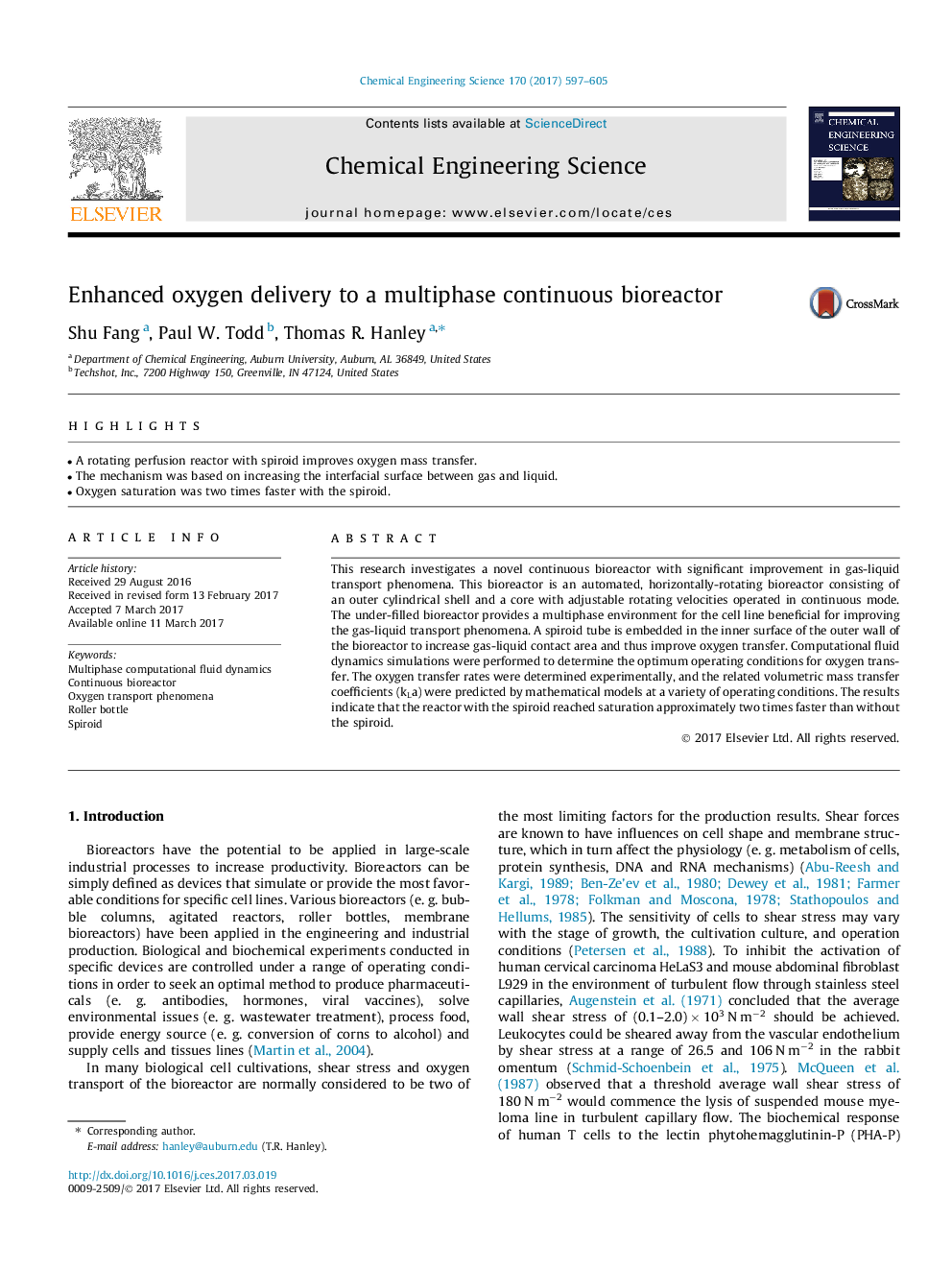| Article ID | Journal | Published Year | Pages | File Type |
|---|---|---|---|---|
| 6467302 | Chemical Engineering Science | 2017 | 9 Pages |
â¢A rotating perfusion reactor with spiroid improves oxygen mass transfer.â¢The mechanism was based on increasing the interfacial surface between gas and liquid.â¢Oxygen saturation was two times faster with the spiroid.
This research investigates a novel continuous bioreactor with significant improvement in gas-liquid transport phenomena. This bioreactor is an automated, horizontally-rotating bioreactor consisting of an outer cylindrical shell and a core with adjustable rotating velocities operated in continuous mode. The under-filled bioreactor provides a multiphase environment for the cell line beneficial for improving the gas-liquid transport phenomena. A spiroid tube is embedded in the inner surface of the outer wall of the bioreactor to increase gas-liquid contact area and thus improve oxygen transfer. Computational fluid dynamics simulations were performed to determine the optimum operating conditions for oxygen transfer. The oxygen transfer rates were determined experimentally, and the related volumetric mass transfer coefficients (kLa) were predicted by mathematical models at a variety of operating conditions. The results indicate that the reactor with the spiroid reached saturation approximately two times faster than without the spiroid.
